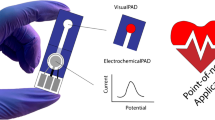Abstract
The fast and direct identification of possibly pathogenic microorganisms in air is gaining increasing interest due to their threat for public health, e.g. in clinical environments or in clean rooms of food or pharmaceutical industries. We present a new detection method allowing the direct recognition of relevant germs or bacteria via fluorescence-labeled antibodies in a gel-based biochip within less than 1 h. In detail, the microorganisms are collected on a gel-based substrate containing fluorescence-labeled antibodies for the detection of a specific microorganism. First measurements with the system to identify test particles as well as interfering influences have been performed, in particular with respect to autofluorescence of dust particles. Specific antibodies for the detection of Aspergillus fumigatus spores have been established. The biological test system consists of protein A-coated polymer particles which are detected by a fluorescence-labeled IgG. Furthermore the influence of interfering particles such as dust or debris is discussed.





Similar content being viewed by others
References
Agranovski IE, Safatov AS, Sergeev AA, Pyankova OV, Petrishchenko VA, Mikheev MV, Sergeev AN (2006) Rapid detection of airborne viruses by personal bioaerosol sampler combined with the PCR device. Atmos Environ 40:3924–3929
Comtois P, Isard S (1999) Aerobiology: coming of age in a new millennium. Aerobiologia 15:259–266
Gieray RA, Reilly PTA, Yang M, Whitten WB, Ramsey JM (1997) Real-time detection of individual airborne bacteria. J Microbiol Methods 29:191–199
Holländer A (2005) Surface oxidation inside of macroscopic porous polymeric materials. Surf Coat Technol 200:561–564
Lee SJ, Park JS, Im HT, Jung HI (2008) A microfluidic ATP-bioluminescence sensor for the detection of airborne microbes. Sens Actuators B 132:443–448
Macher J (1997) Evaluation of bioaerosol sampler performance. Appl Occup Environ Hyg 12:730–736
Makino S, Cheun H (2003) Application of the real-time PCR for the detection of airborne microbial pathogens in reference to the anthrax spores. J Microbiol Methods 53:141–147
Schmitt K, Bolwien C, Sulz G, Koch W, Dunkhorst W, Lödding H, Schwarz K, Holländer A, Klockenbring T, Barth S, Seidel B, Hofbauer W, Rennebarth T, Renzl A (2009) Fast detection of air contaminants using immunobiological methods. Proc SPIE 7362:736207
Squirrell DJ, Price RL, Murphy MJ (2002) Rapid and specific detection of bacteria using bioluminescence. Anal Chim Acta 457:109–114
Stetzenbach LD, Buttner MP, Cruz P (2004) Detection and enumeration of airborne biocontaminants. Curr Opin Biotechnol 15:170–174
Tobias HJ, Schafer PM, Pitesky M, Fergenson DP, Horn J, Frank M, Gard EE (2005) Bioaerosol mass spectrometry for rapid detection of individual airborne Mycobacterium tuberculosis H37Ra particles. Appl Environ Microbiol 71(10):6086–6095
Williams RH, Ward E, McCartney HA (2001) Methods for integrated air sampling and DNA analysis for detection of airborne fungal spores. Appl Environ Microbiol 67(6):2453–2459
Wu Z, Tsumura Y, Blomquist G, Wang XR (2003) 18S rRNA gene variation among common airborne fungi, and development of specific oligonucleotide probes for the detection of fungal isolates. Appl Environ Microbiol 69(9):5389–5397
Acknowledgments
The authors gratefully acknowledge the financial funding from the Fraunhofer Gesellschaft under the MAVO program.
Author information
Authors and Affiliations
Corresponding author
Rights and permissions
About this article
Cite this article
Schmitt, K., Sulz, G., Klockenbring, T. et al. Gel-based biochip for the detection of airborne contaminants. Microsyst Technol 16, 717–722 (2010). https://doi.org/10.1007/s00542-009-0987-y
Received:
Accepted:
Published:
Issue Date:
DOI: https://doi.org/10.1007/s00542-009-0987-y




